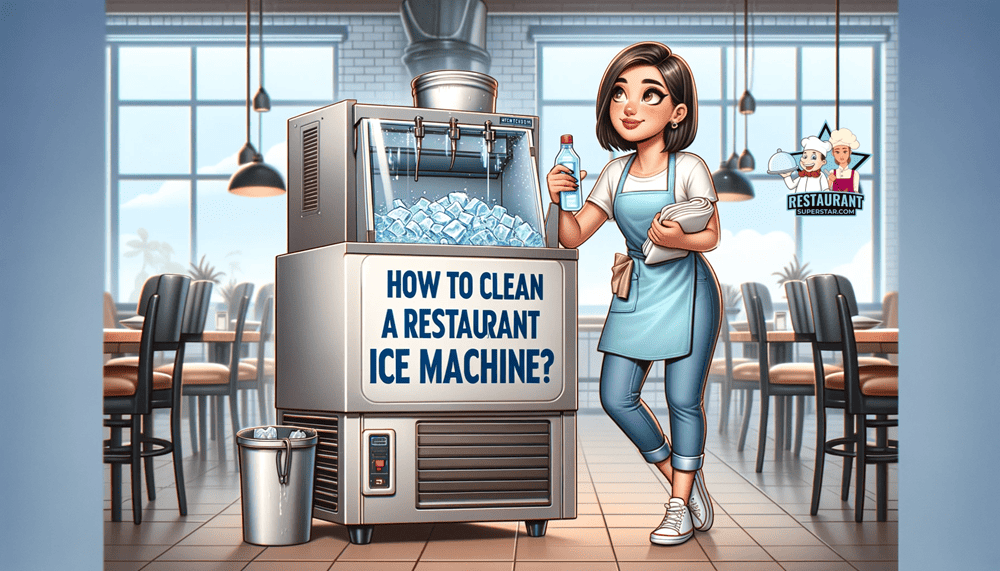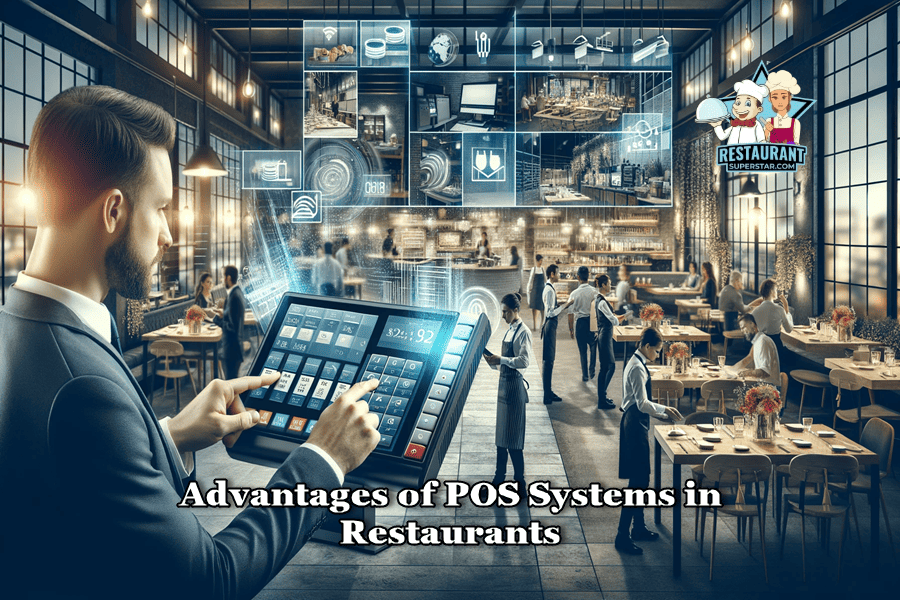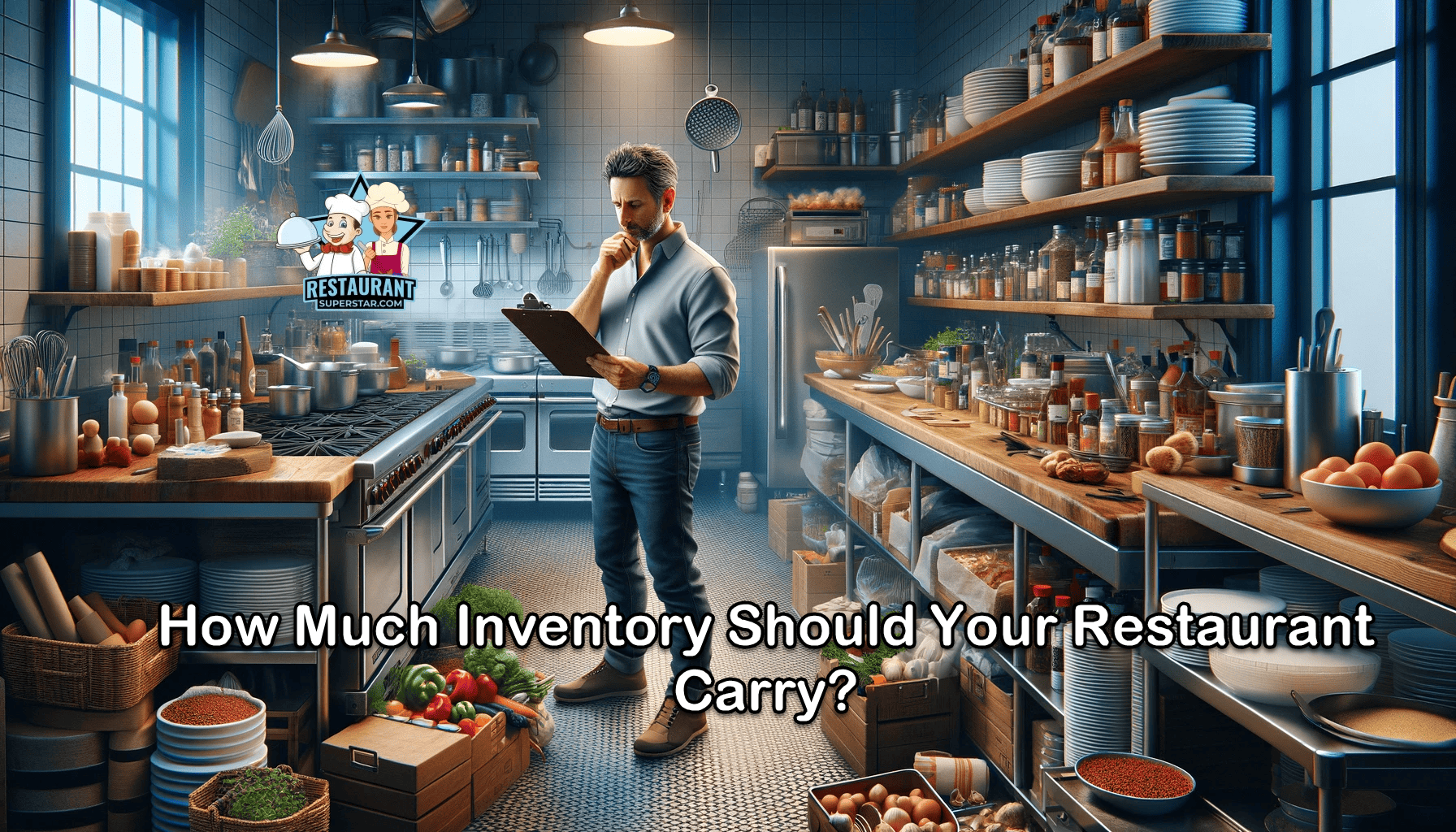Restaurant Inventory Management: Secret to Higher Profits
Welcome to the ultimate guide to the magic behind maximizing restaurant profits. You’re in the right place if you’ve ever pondered, “How is Restaurant inventory management the secret sauce to higher profits?“
This article answers that burning question and dives deep into the nuances that make it the heart and soul of a profitable restaurant venture.
Trust me; by the end of this read, you’ll be itching to revisit and revamp your restaurant’s inventory approach.
What is Restaurant Inventory Management?
What is Restaurant Inventory Management? Efficient restaurant inventory management is vital in monitoring food costs, establishing appropriate menu prices, reducing waste, and maximizing profits. By refining your inventory strategies, you create a path toward well-organized and streamlined operations.
The domino effect?
You sidestep issues like wastage, unexpected shortages, hasty (and expensive) reorders, and even unforeseen spikes in labor costs.
With the unpredictability of the restaurant supply chain, especially in today’s climate, being hands-on and strategic with inventory is not just recommended; it’s a necessity.
But here’s the deal: this is just the tip of the iceberg. This article will be your roadmap to grasping the depths of Restaurant Inventory Management.
From the ins and outs of inventory terms to investing wisely in tech solutions – buckle up, because this Florida guy has got some hot takes and insights that’ll redefine your restaurant game.
Restaurant Inventory Management: More indepth Explanation.
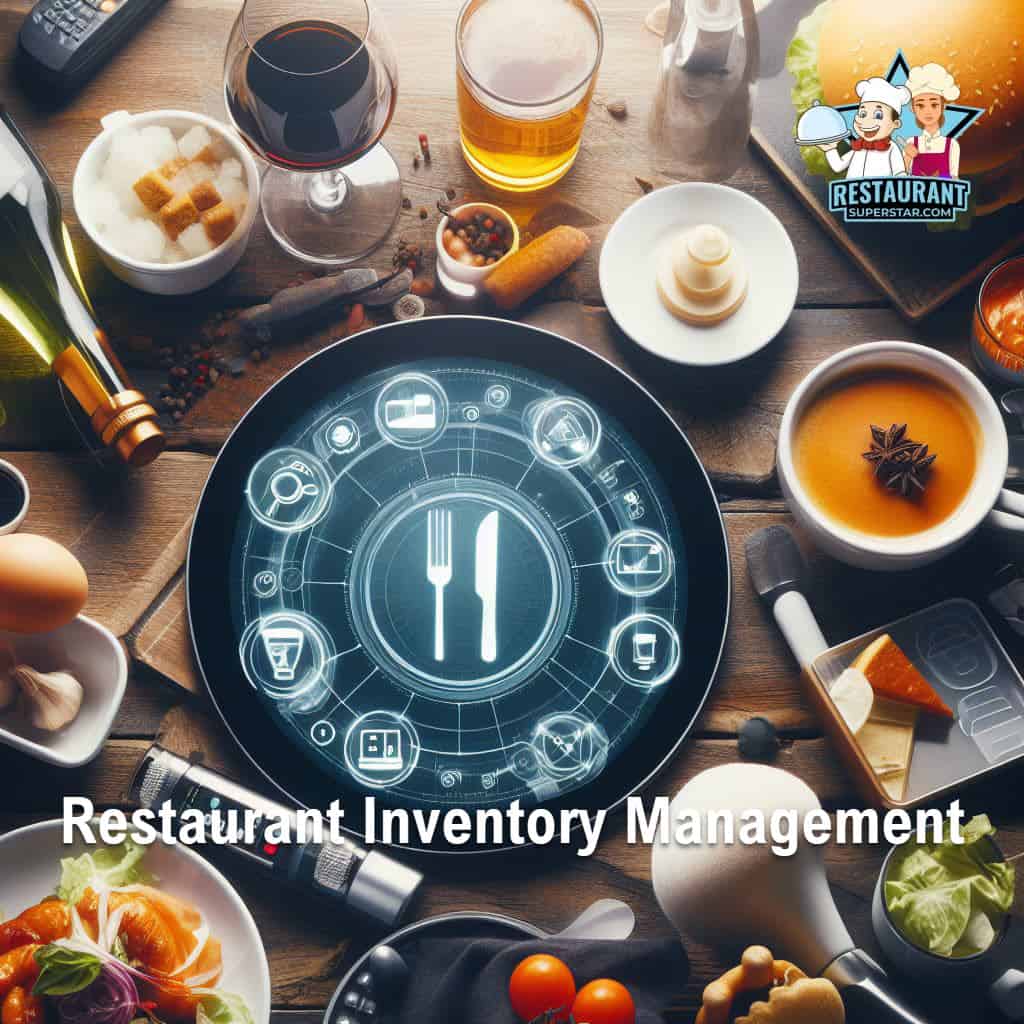
Simply put, Restaurant Inventory Management is like the behind-the-scenes crew of a theater production.
It’s the art and science of keeping a close eye on your ingredients, supplies, and other essentials that keep your restaurant running smoothly. Without it, the show can’t go on.
Why does this seemingly backstage task matter so much, especially when discussing the secret sauce to higher profits?
Well, let me lay it out for you:
- Less Food Waste: Remember when you had to trash those ripe avocados because you overstocked? With solid inventory management, say goodbye to unnecessary waste and hello to optimal stock levels.
- Optimized Costs: We all want the best for our customers. But ordering too much or settling for sub-par ingredients? That’s a no-go. Proper inventory practices ensure you get the bang for your buck every time.
- Boosted Profits: Your menu prices aren’t just plucked out of thin air. They’re often a reflection of your ingredient costs. Mastering inventory management lets you price smartly, manage portions, and forecast sales more accurately.
- Happy Customers: Nothing irks customers more than hearing their favorite dish is out of stock. Ensure consistent, high-quality service by always being stocked up and ready.
The Pitfalls of Ignoring Inventory Management
- Missed Profit Opportunities: Without an eye on your inventory, you might be setting prices based on gut feelings instead of data. This approach could mean you’re either undercharging (losing potential profit) or overcharging (driving customers away).
- Increased Wastage: Untracked inventory often leads to over-ordering or under-utilizing stock. As things go bad, the bin becomes the unfortunate destination for your hard-earned cash.
- Operational Chaos: Have you ever experienced that mad scramble when you realize you’re short on an ingredient mid-service? It’s chaotic and avoidable with proper inventory checks.
- Financial Blind Spots: Neglecting inventory is like navigating the Everglades at night without a torch. You’re in the dark about where your money’s tied up, which can lead to cash flow issues and financial strain.
- Customer Disappointment: Continually running out of popular dishes or frequently changing the menu due to lack of ingredients can frustrate patrons, tarnishing your restaurant’s reputation.
Understanding Restaurant Inventory Management
Alright, let’s dive into the nitty-gritty of restaurant inventory management. So, grab a seat, my friend. If you want, go ahead and pour yourself a drink, and let’s explore what makes Florida restaurants – and eateries worldwide – tick behind those kitchen doors, shall we?
The Real Scoop Behind Tracking and Managing Inventory
Now, imagine a typical bustling restaurant in downtown Tampa. The sun’s setting, the palm trees are swaying, and the restaurant is jam-packed.
Behind this scene, there’s a whole world of ordering, storing, and moving ingredients.
It’s what I like to call the backstage ballet of a restaurant.
Here’s the low-down:
- Consistent inventory tracking isn’t just some corporate mumbo-jumbo. It’s about having enough grouper for that fish taco special or ensuring enough Florida orange for that signature cocktail.
- You get this wrong, and you’re either sitting on too much stock (think of the cash just tied up there) or too little, potentially disappointing a loyal customer.
- Having a tight grip on inventory isn’t just about preventing loss. It’s about squeezing out every ounce of profit, every darn penny.
Let’s Talk Terminology
Alright, now let’s get a bit technical, but don’t worry, I’ll make it easy for you:
- Cost of Goods Sold (COGS): This is a biggie. It’s about understanding what goes into that delicious dish. Whether it’s the price of those fresh chicken wings or the veggies for the salad. And yep, it includes any food that sadly goes to waste. Here’s the magic formula: Beginning Inventory + Purchased Inventory – Ending Inventory = COGS. To clarify it, think of it as: (COGS / Total Sales) x 100 = COGS Sales Percentage.
- Par Levels: This is your safety net. It’s the bare minimum of stock you need to meet demand, plus a little extra for those unpredictable days (like when a bus tour decides your place is the lunch stop).
- Units of Measurement (UOM) and Unit Conversion: Whether buying beef by the pound or selling it by the ounce, this is about ensuring you’re always speaking the same language in quantity.
- Recipes and Count Sheets: No, not grandma’s secret pie recipe. This is about what and how much goes into every dish. Coupled with count sheets your inventory lifelines, these tools help ensure you’re always on top of what you have and need.
- Shelf-to-Sheet: This is a hands-on approach. Counting what’s on your shelves and matching it against your inventory system.
- End-to-End Inventory Management: Think of this as your 360-degree view of inventory. From the moment you order to when an item lands on a plate.
- Depletion and Usage: It’s about understanding how fast ingredients fly off your shelves and predicting what’ll happen next. Got 70 pounds of chicken wings and expect to use ten a day? You’ve got a week’s worth.
- Actual vs. Theoretical Inventory and Variance: These are your reality checks. Theoretical tells you where you should be. Actual tells you where you are. The difference? That’s your variance.
- Inventory Shrinkage: Yep, sometimes things disappear – whether it’s theft, spillage, or that time someone dropped a whole tray of glasses.
- Yield: It’s the final product. After all the prepping and primping, what’s left is good to serve.
Alright, so that was quite a whirlwind tour. But here’s the thing: understanding these terms and processes isn’t just some academic exercise.
Nope, it’s the very foundation of a thriving restaurant. So, why the heck is inventory management so important, you ask? Well, stick with me, and we’ll dive right into it.
Common Restaurant Inventory Terms
Now, let’s dive deep into the heart of restaurant inventory management. Don’t you find it amusing when we use food analogies to discuss food businesses?
Ha! Anyway,
I’ve encountered numerous misunderstandings terms so that you, my fellow restaurant aficionados, can stay ahead of the game.
Let’s embark on this enlightening journey.
FIFO (First In, First Out)
Imagine you’re lining up for checkout at a grocery store in sunny Orlando. The person who arrived first gets served first, right? FIFO works similarly but for your inventory.
It means you should use the oldest items first, ensuring nothing gets left behind to spoil.
Trust me, using that old lettuce before the new one is good for freshness and the wallet.
Par Level
Think of par levels as your safety buoy while deep-sea diving off the Florida coast. They indicate the minimum amount of a particular item you should always have in stock. If you dip below this level, it’s time to reorder. It’s your restaurant’s buffer against those unexpected rushes or hiccups with suppliers.
Waste Tracking
Now, waste tracking isn’t about following your garbage truck. No, sir. It’s about keeping an eye on what gets thrown out.
Understanding waste is crucial for maintaining profits and sustainability, whether it’s due to spoilage, over-prepping, or even kitchen errors.
Jeff’s Anecdote Corner: Lost in Translation
Now, speaking of misunderstandings, I’ve got a little story for you. A few years ago, I consulted for this quaint Miami bistro.
The owner, a wonderful lady, had just gotten a fancy inventory system. But she misunderstood “Par Level” as a golf term (since her husband was a golf enthusiast). She thought it was about ‘scoring’ her inventory.
So, instead of maintaining minimum stock levels, she was trying to ‘score under par,’ meaning she was consistently underordering. You can imagine the chaos during busy dinner shifts.
Customers were waiting longer, dishes were being modified, and let’s just say she was not hitting a hole-in-one that month.
The lesson here? Always clarify terms and ensure you and your team are on the same page.
It saves you from pitfalls and keeps things running smoother than a key lime pie.
Fixed Costs vs Variable Costs in the Restaurant Biz: The Florida Sunshine Edition.
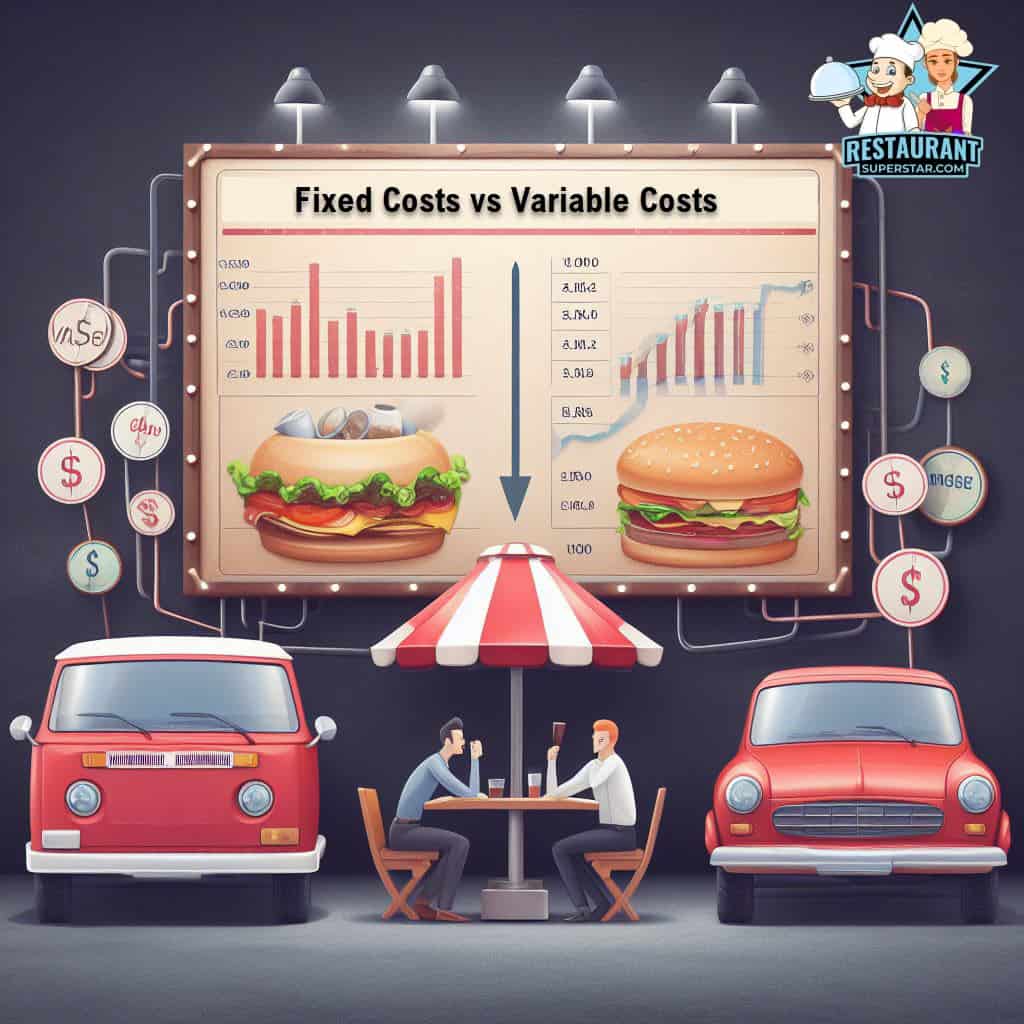
1. What are Fixed and Variable Costs, Anyway?
Now, I know you’ve got a ton on your plate (pun intended). Still, understanding these terms is like knowing the difference between a key lime pie and a cheesecake – they might look similar, but boy, they taste different.
- Fixed Costs: These are like our ever-present Florida sun. Come rain or shine, they’re there. Your rent, insurance, and salaried employees? Fixed costs. They stay pretty much the same month to month.
- Variable Costs: Ah, these are like our tropical storms. They change, sometimes unpredictably. Think of ingredients, hourly wages, and utility bills. They fluctuate depending on your sales, the season, or that sudden cold snap in January (yeah, Florida has those).
2. Tips on Juggling These Costs
Now, from my years soaking in the Florida sun and working with some of the finest joints from Key West to Jacksonville, here are some strategies to manage and optimize these costs:
- Keep Track of Your Inventory: Trust me on this. Good inventory management can be a game-changer. It’s like watching the weather forecast before heading to the beach. Knowing what’s coming in and out of your kitchen makes you less likely to face unexpected shortages or overstocks. And let’s face it, no one wants to tell a customer their favorite dish has been “86’d”.
- Stick to a Count Schedule: Consistency is key, whether it’s the daily sunrise or the monthly full moon. Regular inventory counts help you understand your stock levels and can highlight if something’s amiss. It also lets you spot trends, like if that new shrimp dish sells faster than sunscreen in July.
- Organize, Organize, Organize: Remember that you couldn’t find your sunglasses once, only to realize they were on your head? The same goes for your inventory. Labels, designated areas for different foods, and removing expired items can save you a lot of heartache.
- Train Your Team: A captain is only as good as his crew. Everyone plays a part, from line cooks noting spoilages to managers generating detailed inventory reports. And even better if you’ve got a more user-friendly system than a beachfront hammock.
3. A Quick Word on Seasonality
Some menu items shine seasonally, like our Florida oranges, which taste sweeter in certain months.
Keep an eye on what’s hot and what’s not. If that pumpkin-spiced mojito isn’t selling post-Halloween, your inventory will show it.
Adjust accordingly, and you’ll keep your customers happier than a seagull with a french fry.
As we navigate the highs and lows of the restaurant business, understanding fixed and variable costs is as vital as knowing when it’s hurricane season. It helps you prepare, adjust, and thrive.
Manual Restaurant Inventory Management: The Old-School Way
Let’s travel back in time and discuss a method that feels as vintage as an old neon Miami sign: Manual Restaurant Inventory Management. Something is endearing about doing things the old-school way, isn’t there?
The Allure of Pen and Paper
Picture this: A rustic restaurant on Florida’s Atlantic coast, where the scent of saltwater mixes with the enticing aroma of fried snapper.
Here, everything feels timeless, right down to their inventory management. The management at this local gem swears by traditional methods.
From hand-written logs detailing the daily catch to binders full of invoices, it’s a haven for manual systems.
But why, you ask?
They believe in the touch and feel of paper, that it keeps them connected to the real essence of their business. For them, it’s not just about numbers but the people and the processes that bring those numbers to life.
The Process and Its Pain Points
It’s a routine many of us might remember:
- Paper Logs: Every storeroom, freezer, and fridge item was noted down diligently on printouts. The tangibility of paper somehow makes the inventory feel real and personal.
- Excel’s Era: Those handwritten figures would then migrate to Excel spreadsheets. It was a step up, making calculations simpler, but also introduced its set of challenges. From mismatched units of measurement (UOMs) to misplaced decimals, errors would sometimes sneak in.
- Invoice Investigation: The hunt for invoices would begin, usually stashed in a drawer or pinned to a corkboard. Costs were matched, sometimes requiring conversions if suppliers had varying UOMs.
- Time-Consuming & Error Prone: Manual methods, as nostalgic as they might be, often lead to time loss and errors. Mistakes meant hours rechecking figures and adjustments to already tight budgets.
Modern Methodologies
While there’s charm in manual methods, technology now offers solutions that can save us hours and reduce the room for error:
- Digital Invoicing: Say goodbye to heaps of paper. Invoices are digitized, making tracking and calculations faster and more efficient.
- Mobile Inventory Management: No more lugging around bulky binders. Inventory can be managed on the go with mobile apps, even in the Wi-Fi-challenged corners of your restaurant.
- Automatic Updates & Prompts: Inventory counts are prompted, prices are updated automatically, and par levels ensure you’re always stocked right.
- Unified Platforms: While some struggle with multiple software solutions, the best platforms offer an all-in-one experience – from inventory automation to full-fledged management.
The old-school methods have a certain charm – an intimacy, a connection. The restaurant I mentioned?
They have a loyal clientele, some of whom appreciate the establishment’s dedication to tradition.
Yet, for many modern restaurateurs, especially those just starting or scaling up, the efficiency of new inventory technologies cannot be overlooked.
Whether you’re a vintage fan or vying for the virtual, it’s all about finding what fits your restaurant’s rhythm.
And remember, whether it’s pen and paper or pixels on a screen, the ultimate goal is a successful, smooth-running eatery.
What Are some Inventory Management Software for Restaurants?
Now, I know we’ve touched base on inventory and how crucial it is to keep that balanced. But let’s deep dive into some digital tools that can make this task a breeze.
I’ve seen firsthand the difference the right software can make for all my budding restaurateurs and chefs.
And honestly, in the age of technology, who wants to be left scribbling on paper when fantastic tools exist?
So, here’s my list of restaurants’ best inventory management software. And trust me, these are game-changers.
- MarketMan: This tool is a lifesaver for those who want everything under one digital roof. Real-time management? Check. Integration with various POS systems? Check. Reduce food waste and streamline costs. Double-check. Its features, like recipe management and waste tracking, ensure every cent and ingredient counts.
- xtraCHEF by Toast: One of my personal favorites! Especially if you’re already working with the Toast POS system. Snap a pic of your invoices, sync them up, and let this baby do its thing. It’s user-friendly and offers insights that can genuinely boost your profitability.
- CrunchTime: This one’s for those who love diving deep into the numbers. Analyze and optimize both inventory and labor costs. Got multiple locations? No problem. CrunchTime has got you covered, helping you centralize purchases and automate orders.
- Lightspeed Restaurant: Lightspeed is not just a POS. Their inventory features are on point. Get alerts when you’re running low on stock, manage those tasty recipes, and let the system’s data-driven insights guide your ordering. It’s like having a little guardian angel for your inventory.
- Yellow Dog: If you’re in the commissary or catering business, give this a whirl. Track everything across locations, from production transfers. Integrate it with your POS, and boom—you’re golden.
- Mstar Restaurant: Alright, I might be a tad biased because Mstar’s a Florida gem, but trust me when I say, this software gets it DONE. It’s similar to Lightspeed but with a tropical twist. Automated ordering based on sales data, inventory tracking, recipe management—you name it, Mstar has it.
Choosing the right inventory management software is like picking the right fishing spot in Florida.
You gotta find the one that suits you best. But once you do? You’re all set for success. Remember, the question isn’t “How Much Inventory Should Your Restaurant Carry?” but “How can I manage it most effectively?
Investing in Restaurant Inventory Management Software: A Digital Revolution
The food and beverage industry has always been a hotbed for innovation and evolution.
In recent years, one of the most significant shifts we’ve seen is the adoption of digital tools in areas once dominated by manual processes. A notable example? Inventory Management.
The Rise of Digital Inventory Management
In the past, inventory management was a tedious and time-consuming process involving pen, paper, and spreadsheets.
However, the digital age brought software solutions, ushering in efficiency, accuracy, and growth.
Mstar POS embodies this revolution, serving as an all-in-one platform for restaurants to manage their inventory seamlessly.
Benefits of Mstar POS
- Unified Platform: Instead of juggling between different tools and systems, Mstar offers a consolidated platform for both invoice processing automation and inventory management.
- Automated Product Catalogs: Keeping track of products is easier than ever. With auto-curated product catalogs, creating count sheets becomes a breeze.
- Product Grouping: This feature is a boon for restaurants sourcing ingredients from multiple vendors. It ensures you always get the best deals by comparing prices.
- Par Level Integration: Never understock or overstock again. The system auto-generates order guides to help you maintain optimal inventory levels.
- User-friendly Interface: Configurable count sheets mimic the physical layout of your kitchen, making the inventory process intuitive.
- Mobile Capabilities: With Mstar’s mobile features, taking inventory counts in hard-to-reach places, like walk-ins, becomes hassle-free. Once you’re back online, all data gets synced effortlessly.
The Florida Success Story: Coastal Breeze Bistro
On the shores of sunny Florida, Coastal Breeze Bistro is a testament to the power of effective inventory management.
A year ago, they relied heavily on manual methods, often leading to over-ordering, wastage, and decreased profit margins. However, their transition to Mstar POS changed the game.
Within a few months, Coastal Breeze Bistro significantly reduced food wastage thanks to accurate inventory counts and optimal ordering.
Their monthly food costs dropped by nearly 15%, leading to a marked increase in their profit margins.
The restaurant’s manager, Maria Gonzalez, shared, “Mstar POS transformed how we view inventory. What was once a tedious task is now a streamlined process.
The accuracy and insights provided by the software have been instrumental in our recent growth.”
Deciding between traditional methods and modern inventory management software can be daunting for many restaurateurs.
Yet, stories like that of Coastal Breeze Bistro are a testament to the profound impact such a change can have on profitability and operational efficiency.
As the industry continues to evolve, staying ahead of the curve and investing in tools like Mstar POS could be the difference between thriving and surviving in the competitive world of gastronomy.
Top Tips for Maximizing Profits with Inventory Management
From years of consulting with restaurants, big and small, I’ve gleaned key insights into the art and science of inventory management.
Profits aren’t just a result of more customers and higher prices; effective inventory management plays a crucial role in boosting a restaurant’s bottom line.
Here are some of my top tips, backed by real-life experiences, to help you enhance profitability:
- Conduct Regular Inventory Checks: This might seem elementary, but many restaurants neglect this simple step. Regular weekly or monthly checks provide insights into product usage patterns. Understanding your consumption rates can better forecast needs and prevent wastage.
- Leverage the First-In-First-Out (FIFO) Approach: Always use older inventory before new stock. This ensures ingredients are fresh and minimizes waste due to spoilage. I consulted a seafood restaurant that significantly reduced waste by diligently applying FIFO.
- Negotiate with Vendors: Based on your inventory trends, negotiate bulk discounts or favorable payment terms with suppliers. For example, if you notice a consistent consumption pattern, consider long-term contracts with vendors to lock in lower prices.
- Reduce Par Levels: Overstocking ties up capital and increases the risk of waste. Analyze sales data and adjust your par levels accordingly. By doing so, one café I worked with reduced its inventory costs by 20%.
- Diversify Your Supplier Base: Don’t rely on a single vendor for critical ingredients. You can capitalize on competitive pricing by diversifying, ensuring you always get the best deal.
- Cross-Training Staff: Ensure multiple staff members understand inventory procedures. In case of absenteeism or turnover, you won’t face disruptions. A restaurant in New York I consulted saw improved inventory accuracy simply by training more of their staff.
- Monitor Waste: Create a waste log. Track items that are thrown away and analyze the reasons. Maybe a dish isn’t popular, or there’s consistent over-preparation. Addressing these issues can reduce costs significantly.
- Seasonal Menu Planning: Design menus based on seasonal availability of ingredients. Not only will you get fresher ingredients, but you can also take advantage of lower prices during abundant seasons.
- Embrace Technology: Digital inventory systems, like the one mentioned earlier, streamline processes, reduce errors, and provide actionable insights. The upfront investment can lead to long-term cost savings.
- Engage Your Chefs: Chefs are on the front lines and can provide invaluable feedback on product usage, potential substitutions, or menu changes to optimize inventory.
- Review and Revise: Inventory management isn’t a one-size-fits-all. Regularly review your processes, supplier agreements, and par levels. Adapt to changes in consumption patterns, menu offerings, and supplier conditions.
Action Steps for Restaurant Owners & Chefs
- Audit your current inventory processes. Identify gaps and areas of inefficiency.
- Educate your team on the importance of inventory management and its impact on profitability.
- Implement the tips above and set clear protocols.
- Regularly review your inventory data. Look for trends, anomalies, and areas of improvement.
- Invest in continuous training, ensuring your team is always updated on best practices.
Your inventory is money sitting on your shelves. By managing it efficiently, you ensure that your capital is utilized best, leading to higher profitability and smoother operations. Embrace the strategies above, and watch your restaurant thrive.
Conclusion
Effective inventory management is more than just a logistical necessity; it’s a cornerstone of a thriving restaurant business.
Every item on your shelves represents capital — an investment waiting to be transformed into delicious dishes and profits.
But without a strategic approach to managing this inventory, that potential can easily go to waste, literally and figuratively.
The food industry is a dance of fine margins, and while ambiance, service, and culinary creativity undoubtedly play pivotal roles, the unsung hero behind the scenes is efficient inventory management.
It ensures sustainability, reduces wastage, maximizes resources, and, most importantly, drives profitability.
To all the restaurant owners and chefs reading this: remember, inventory management is the rhythm that keeps everything in tune in the bustling symphony of restaurant operations.
Embrace its significance, refine your strategies, and watch as your establishment serves delightful dishes and reaps the rewards of financial success.
As you step forward, let this be your mantra: Perfection in preparation breeds excellence in execution. So, prioritize and perfect your inventory management tactics. The journey to culinary and commercial success awaits.
Jeff Smith is a Restaurant Consultant with over 20 years of hospitality experience ranging from server to owner and general manager. He focuses on Restaurant POS technology as well as restaurant marketing. Check out our world-famous restaurant resources page for a comprehensive offering of hand-picked resources and tools to help your business. You can also check out some of our other restaurant business articles.

